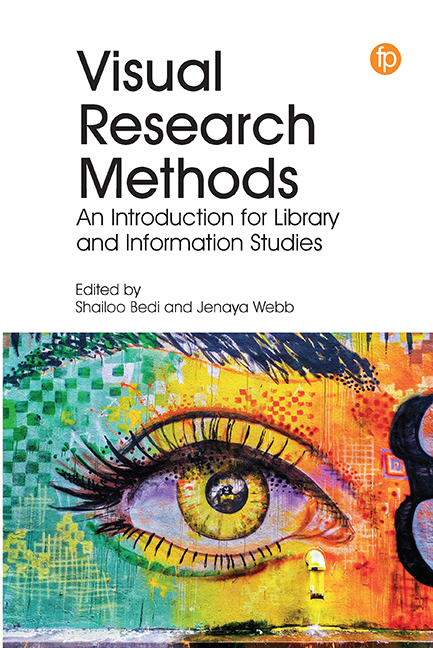2 - Visual Research Methods: Discovery
Published online by Cambridge University Press: 07 November 2020
Summary
Until recently, visual research methods have been an overlooked option within LIS, which have instead favored verbal and written approaches to research methods. However, according to Gombrich and Woodfield (1996) and Mirzoeff (1999), society is living through a social and cultural era dominated by the visual. Indeed, our lives seem to be permeated by the visual in all aspects, thanks, in part, to the ease and access of digital technologies. This so-called ‘visual turn’ is reflected not only in the ubiquity of visual images in the modern era, but also in the increasing willingness of scholars in humanities and social science disciplines to adopt visual approaches in their research (Prosser and Loxley, 2008).
As discussed in the previous chapter, visual research methods are research techniques that use visual elements such as film, video, drawings, paintings, photographs, digital images and artistic media within a research context. These methods became more widely accepted in social science research practices in the 1960s, when scholars began to use images not only as tools with which to document factual occurrences, but also as symbolic representations of lived experiences and windows into wider cultural and social phenomena (Pink, 2001; Rose, 2012; Schwartz, 1989; Stanczak, 2007). It is this approach to visual research that interests us here. We see this growing interest in the qualitative examination of visuals as an innovative way to investigate and discover new things about our complex social and information worlds.
This chapter will touch lightly on a broad range of considerations for visual research projects. It is intended as a starting point, or a point of discovery, for readers of this book. We begin by discussing how visual research methods can be used to understand images within a qualitative approach. We then touch on the impact of epistemologies and the importance of using theoretical approaches for understanding visual data and drawing informed conclusions to the questions we are investigating. We also point to key considerations for analysing visual data and think through practical considerations, such as ethical issues and research data management. This chapter is by no means an exhaustive discussion of these topics. Indeed, there are entire textbooks dedicated to each. Rather, we open these conversations here as a way to guide researchers as they to embark on a visual research project.
- Type
- Chapter
- Information
- Visual Research MethodsAn Introduction for Library and Information Studies, pp. 29 - 50Publisher: FacetPrint publication year: 2020



